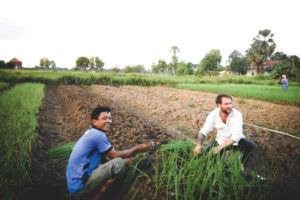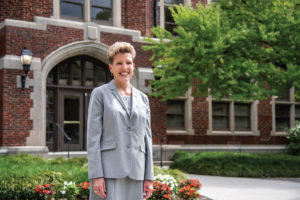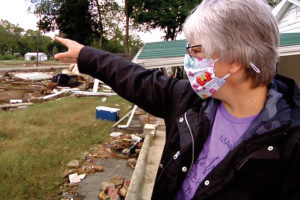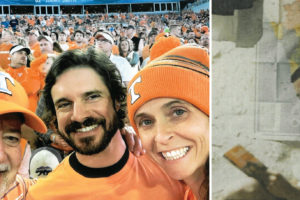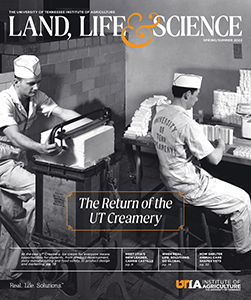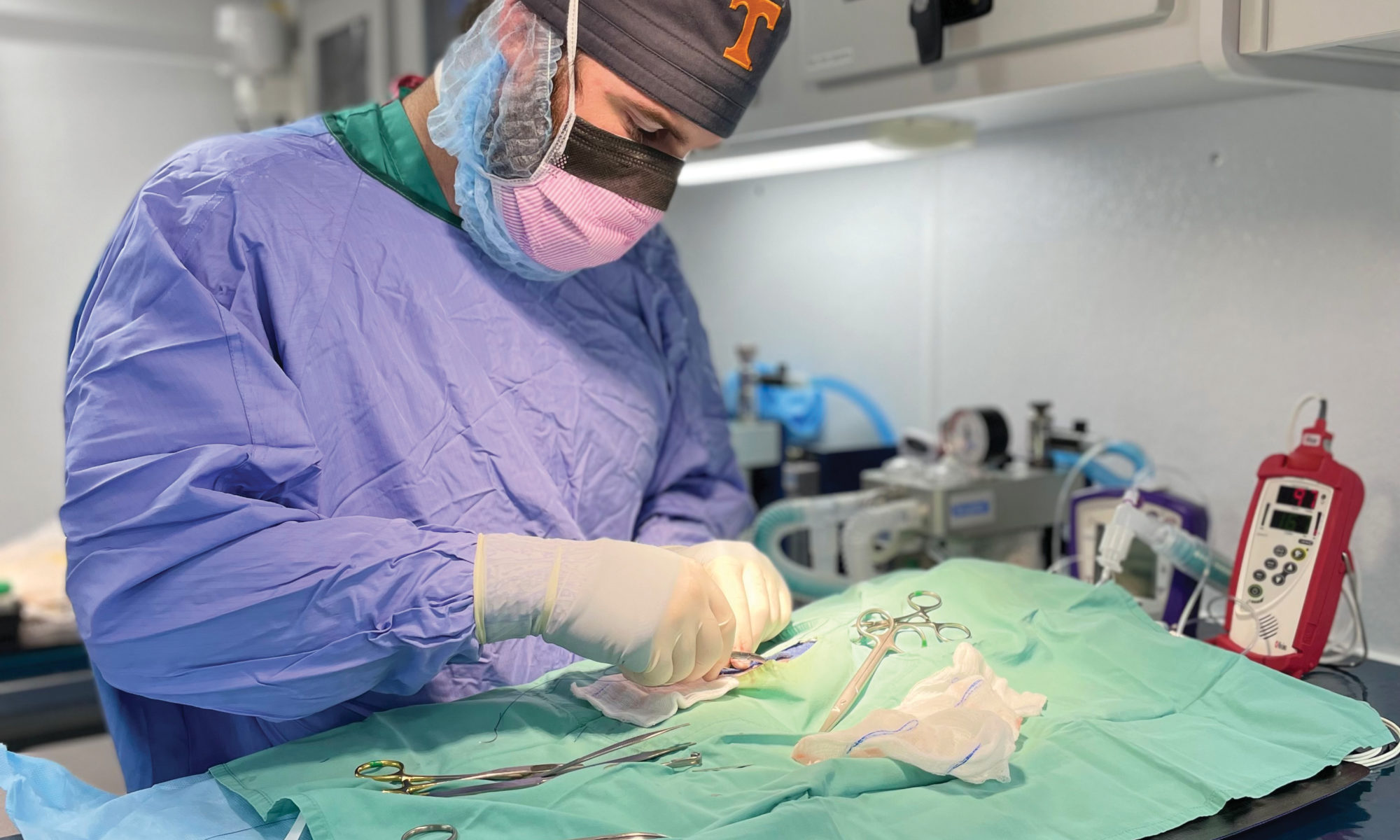
Call it a win for everyone served by the College of Veterinary Medicine’s shelter animal service
Once and sometimes twice a month, shelter medicine service students and practitioners with the UT College of Veterinary Medicine spay and neuter animals from the Unicoi County Animal Shelter.
The rural, isolated county in northeast Tennessee stretches along the state’s border with North Carolina. Because the shelter is a two-hour drive from the veterinary college, the spay/neuter mobile meets them halfway in Bulls Gap, Tennessee, and sets up in the parking lot of Yoder’s Country Market. The drive is worth it for shelter director Kevin King. In the past fiscal year, the shelter took in more than 700 animals from the county and is on track to top that this year.
“Being able to receive help from UT, the doctors, and the students has been so impactful,” says King. “We are terribly underfunded, as well as being in a low population and income area so being able to get the animals help through the veterinary college has probably saved at least fifty percent of the cats that come into the shelter.”
The College of Veterinary Medicine created an elective spay/neuter course for fourth-year veterinary students in 2013, and it became a required rotation in 2019 due, in part, to the popularity of the course and the need for students to have more hands-on surgical training prior to graduation. During their two-week rotation, veterinary students travel with the College’s mobile clinic to shelters throughout East Tennessee to learn safe and effective anesthetic and spay-neuter surgical techniques.
As a former college professor, King appreciates the involvement of veterinary students. “I love knowing that the students are getting the knowledge while also making such a difference in the community here as well as elsewhere.”
Becky DeBolt, clinical assistant professor of shelter medicine, says there is a vast variety of cases so students get to experience a full spectrum of possibilities and outcomes—both good and bad. “On good days, you see a spayed animal be adopted; that’s an exciting win for everybody. On tough days, you witness an infectious disease move through the shelter. That’s heartbreaking when you’ve tried so hard to protect the animals,” she says.
I became a veterinarian to alleviate pain and suffering in animals, and shelter medicine is the purest essence of that.
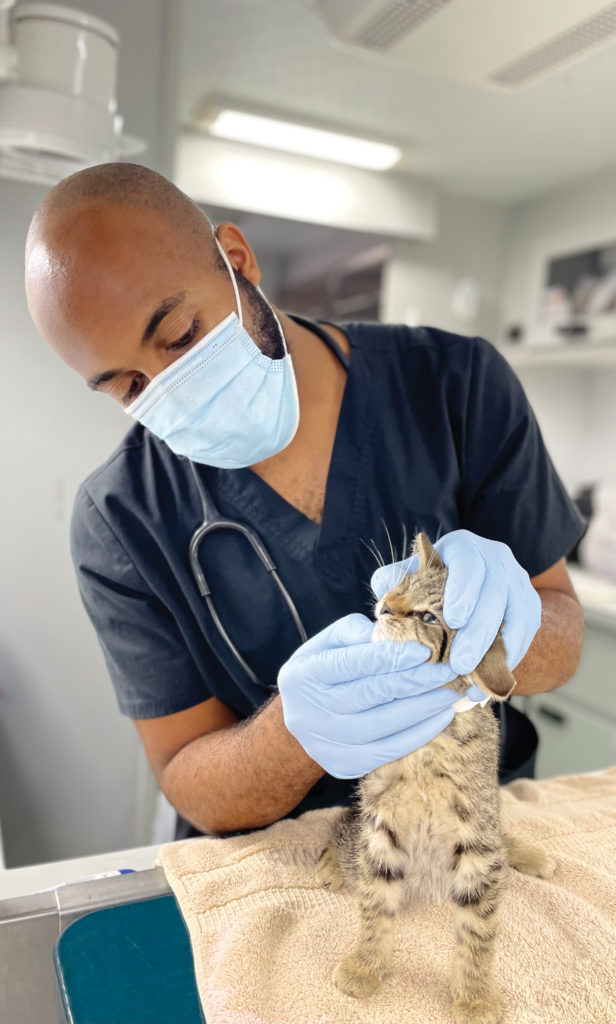
Shelter medicine reinvigorated DeBolt’s love of veterinary medicine. “I became a veterinarian to alleviate pain and suffering in animals, and shelter medicine is the purest essence of that,” she explains.
Through shelter medicine, veterinarians act to control infectious diseases and promote health and wellness in shelter populations and within communities. They possess a strong background in epidemiology, public health, and animal behavior. “Our biggest focus is making the stay as short as possible for the animals. We want to re-home them in a timely fashion so their physical and behavioral health is maintained to the best of our ability, and the human-animal bond can be preserved,” DeBolt says.
The field of shelter medicine has grown in leaps and bounds over the past forty years, yet there still is much work to be done. The American Society for the Prevention of Cruelty to Animals estimates some 6.3 million companion animals enter animal shelters nationwide every year, and about 920,000 shelter animals are euthanized. The shelter medicine program, along with one the College’s community outreach programs, the Companion Animal Initiative of Tennessee (CAIT), is working to reduce those numbers in the Volunteer State.
Two goals for the students’ rotation are to provide inclusive outreach to improve animal welfare and overpopulation problems, and to equip students with the knowledge and ability to be competent veterinarians. The course instills a deep understanding of animal overpopulation and welfare issues as students learn about the medical, behavioral, and surgical issues encountered in local animal care facilities.
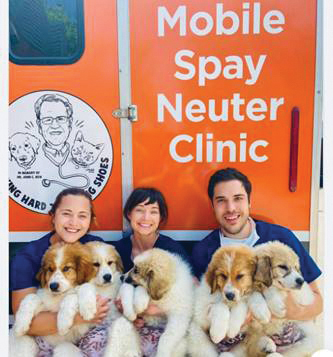
In many instances, the students’ rotation in the shelter medicine program not only improves their surgical skills, it also helps to break down cultural barriers and preconceived ideas as the students work with underserved populations. DeBolt says, “I feel one of my duties is to inform up-and-coming private practitioners about the differences and challenges in shelter medicine so they can make impactful changes in their own communities.”
She and fellow UTCVM shelter veterinarian Jennifer Weisent, veterinary medical technicians Jess Thompson and Kayla Parrott, and CAIT coordinators Alexis Niceley and Jaime Norris make up the core shelter medicine team, which is also known as Team Awesome. Team members work with seventeen shelters, rescues, and community cat organizations in twelve counties across East Tennessee. Since the program began in 2013, the mobile spay/neuter rotation has provided surgery to more than 18,000 unowned cats and dogs. The work helps shelters, helps communities, and helps students while creating healthier animal populations.
All told, that’s a huge win for everyone, two-footed and four-footed alike, touched by the programs.
Explore More on
Features
MORE FROM THIS ISSUE



